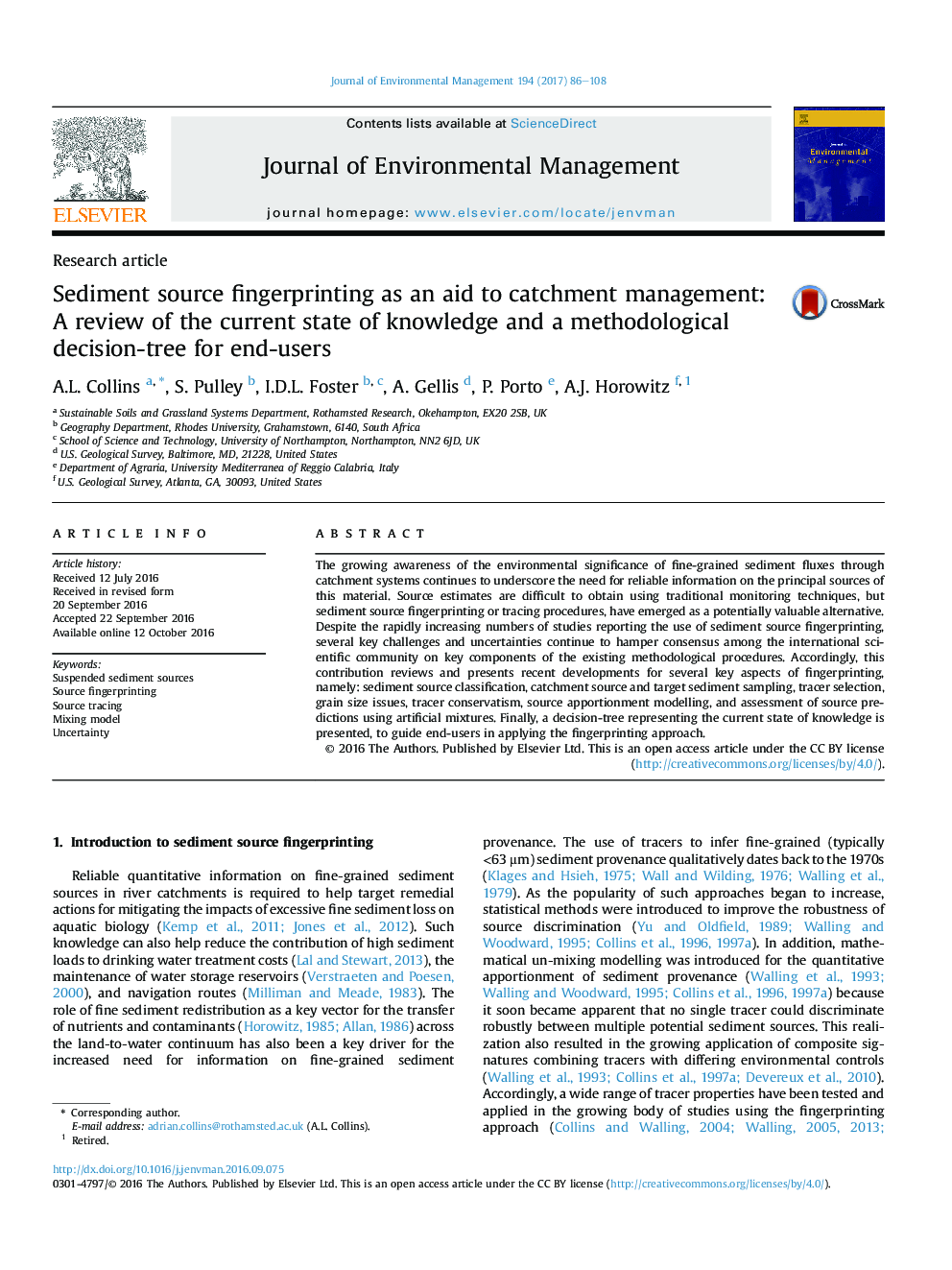| Article ID | Journal | Published Year | Pages | File Type |
|---|---|---|---|---|
| 5116921 | Journal of Environmental Management | 2017 | 23 Pages |
â¢Key methodological issues hamper widespread uptake of sediment fingerprinting.â¢Recent key developments are reviewed.â¢A decision-tree for the current state of knowledge is presented to guide end-users.
The growing awareness of the environmental significance of fine-grained sediment fluxes through catchment systems continues to underscore the need for reliable information on the principal sources of this material. Source estimates are difficult to obtain using traditional monitoring techniques, but sediment source fingerprinting or tracing procedures, have emerged as a potentially valuable alternative. Despite the rapidly increasing numbers of studies reporting the use of sediment source fingerprinting, several key challenges and uncertainties continue to hamper consensus among the international scientific community on key components of the existing methodological procedures. Accordingly, this contribution reviews and presents recent developments for several key aspects of fingerprinting, namely: sediment source classification, catchment source and target sediment sampling, tracer selection, grain size issues, tracer conservatism, source apportionment modelling, and assessment of source predictions using artificial mixtures. Finally, a decision-tree representing the current state of knowledge is presented, to guide end-users in applying the fingerprinting approach.
